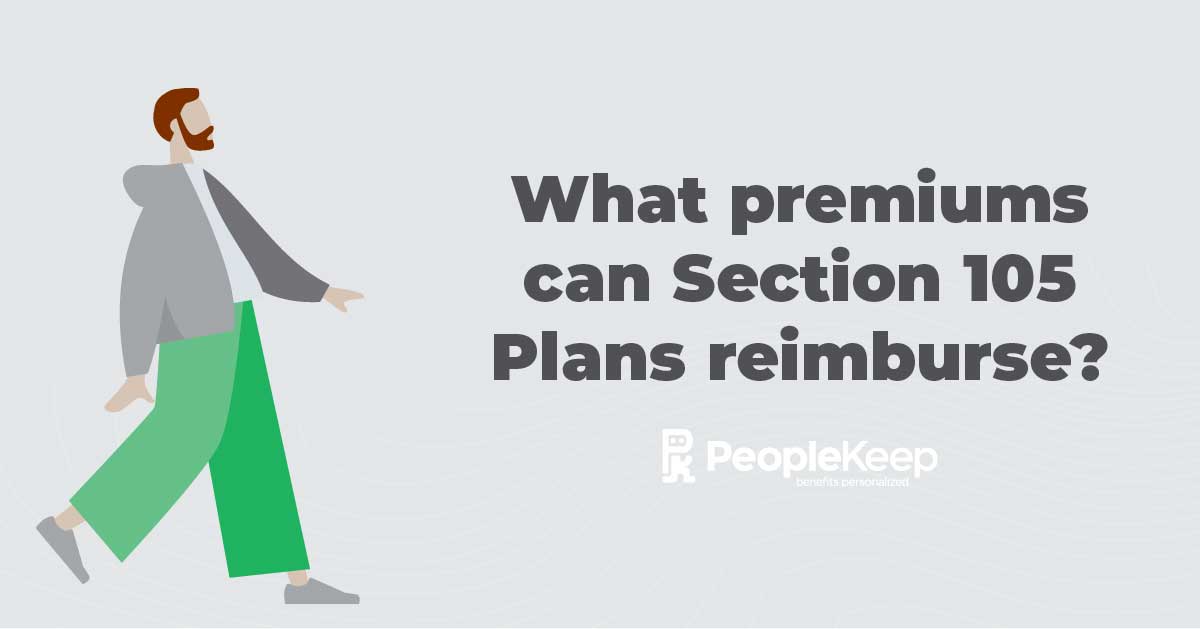Section 105 Medical Reimbursement Plans: FAQs
By Christina Merhar on July 15, 2013 at 8:00 AM
Small businesses often use Section 105 Plans as a solution for small business health insurance. Section 105 of the IRS code allows an employer to reimburse employees for their out-of-pocket medical costs and health insurance. These can be expenses incurred by the employee or his or her dependents, but they must be allowed under the plan document.
Section 105 Medical Reimbursement Plans are commonly known as Health Reimbursement Arrangements (HRAs) or Healthcare Reimbursement Plans (HRPs), and can be the foundation of a defined contribution health plan.
Here are the top three questions from small business owners about setting up a Section 105 Medical Reimbursement Plan.
FAQ #1: Can I administer the Section 105 Plan myself?
A small business can self-administer its own Section 105 Plan, but failure to comply with the minimum federal administration requirements is common without utilizing proper Section 105 Software. If a small business does not utilize proper administration software to fully comply with the Section 105, ERISA, HIPAA, COBRA, and ACA regulations, the administrative cost likely outweighs the benefits. Fines for not complying with these regulations are costly. For these, reasons most small businesses do not self-administer their Section 105 Plan.
FAQ #2: Can I pay for employees’ individual health insurance premiums without a Section 105 Plan?
Some businesses might want to pay directly for an employee's individual health insurance plan without utilizing an ERISA- and HIPAA-compliant platform, but doing so may put the business out of compliance with federal regulations, and may increase the business’s (and employees’) tax liability. Specifically:
-
Paying for individual health insurance without a formalized Section 105 Plan causes the employer to "endorse" the individual health insurance plans (this violates ERISA).
-
Employers are not allowed to know the details of employees' HIPAA-protected medical expenses. When an employer pays for the individual policy, they can violate HIPAA-privacy requirements because they know the details of a HIPAA-protected employee expense.
-
Paying for individual health insurance without a Section 105 Plan causes the payments to become taxable income to the employees.
FAQ #3: Can a small business owner participate in a Section 105 Plan?
Yes, a small business owner can and should participate in the business’s Section 105 Plan. However, whether or not owners are eligible to receive reimbursements 100% tax free depends on how the company files taxes, and the owner's status.
-
C-Corporation Owners: C-Corp owners may participate in a Section 105 Plan and receive all reimbursements 100% tax-free.
-
Sole Proprietors, Partners, or S-Corp shareholders that own >2% of the company's shares: These Non-C-Corp owners can use the Section 105 software platform to reimburse and track medical expenses. However, all reimbursements must be reported on the owners'/partners' wages (on their W-2 and 1040 forms) and are subject to federal income taxes. Although, exceptions exist if the spouse is also a W-2 employee.
For more information on owner participation, see our full guide to Section 105 plans.
Check out more resources
See these related articles

Section 105 plan vs. Section 125 cafeteria plan
Discover the key differences between a Section 105 plan and a Section 125 cafeteria plan in this informative post. Learn which plan is best for you.

FAQ: Can owners participate in Section 105 medical reimbursement plans?
Can an owner participate in a Section 105 Plan? This FAQ answers whether an owner can participate in a Section 105 Medical Reimbursement Plan.

What health insurance premiums can Section 105 plans reimburse?
Discusses the types of health insurance premiums Section 105 plans can reimburse.


